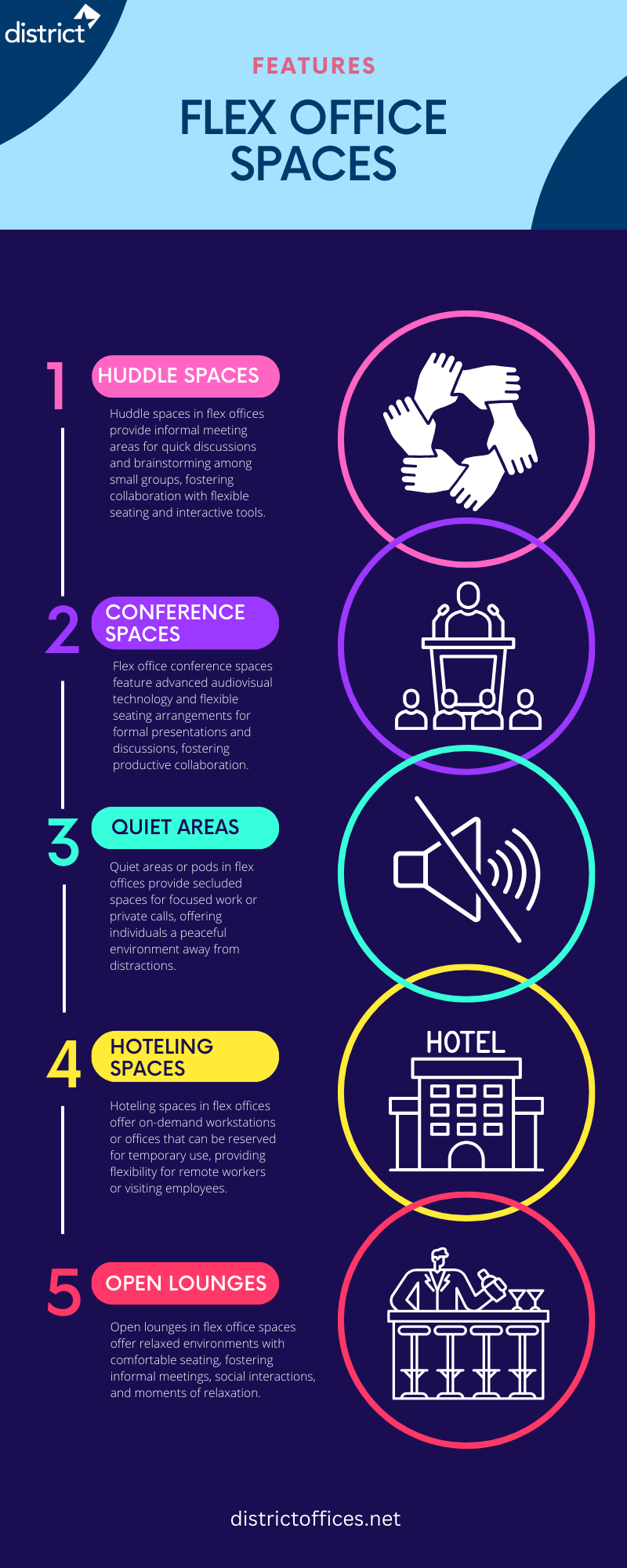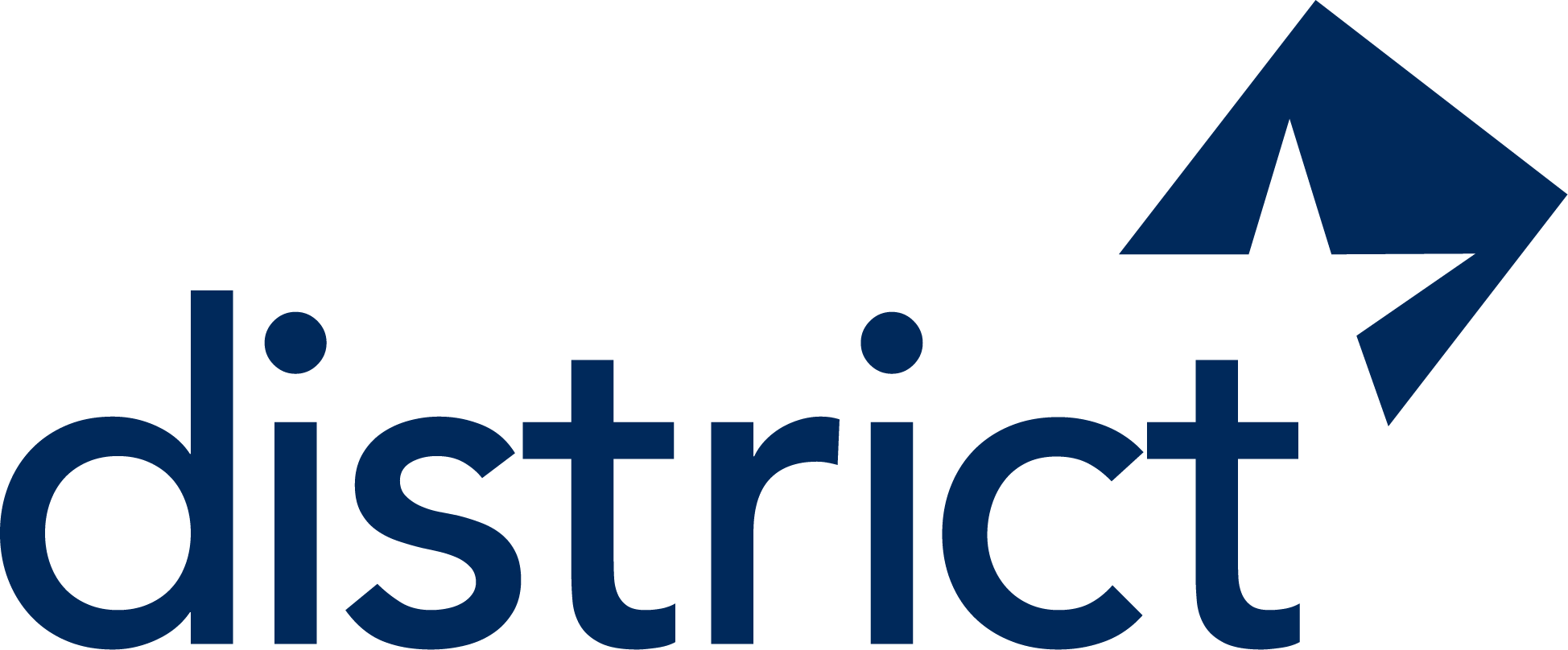The past two years changed the very foundation of how and where we work. Flex office space is an emerging solution for a hybrid work model. Let’s explore what that means and how it can be beneficial for your company.
What is a Flex Space?
A Flex Space is a workplace you can rent on a short-term basis that has a multipurpose design and is often shared between companies. Some companies may even have multiple flex spaces in a city to give their workforce location options and a reduced commute time.
A flex space, often referred to as a flexible space, is a dynamic area within a building designed to adapt to a variety of purposes. Unlike traditional static spaces with fixed layouts, flex spaces are characterized by their versatility and adaptability, allowing for seamless transformation based on changing needs and activities.
These spaces are commonly found in commercial settings such as office buildings, coworking spaces, and retail establishments, where the ability to efficiently utilize square footage and accommodate diverse functions is essential.
Open floor plans, modular furniture, and flexible infrastructure that allows simple reconfiguration are common features of flex spaces. They can be used as conference spaces, training rooms, collaborative work places, or event locations, among other things.
Flexible design components combined with technology give users the ability to maximize their surroundings, encouraging creativity, teamwork, and efficiency. Flex spaces are a vital asset in modern building design and workplace planning because they give organizations the flexibility they need to succeed in dynamic environments in an era of rapid change and developing work dynamics.
How Does a Flex Space Work?

Flex spaces operate on the principle of adaptability and functionality, offering users a variety of settings to accommodate different activities and group sizes. At the core of a flex space are open-concept layouts that provide a canvas for diverse uses. Within this framework, several key features enhance the functionality of these spaces:
Huddle Spaces
These are small, informal meeting areas designed for quick discussions or brainstorming sessions among small groups. Equipped with seating and possibly a whiteboard or screen, huddle spaces foster collaboration and idea-sharing.
Conference Spaces and Meeting Rooms
Flex spaces often include larger meeting rooms or conference spaces suitable for formal presentations, discussions, or larger gatherings. These areas are equipped with technology such as audiovisual systems and conference calling facilities to support productive meetings.
Quiet Areas or Pods
Recognizing the importance of individual focus and privacy in a collaborative environment, flex spaces incorporate quiet zones or pods where individuals can retreat for concentrated work or to take private calls without distractions.
Hoteling Spaces
These are flexible workstations or offices that can be reserved on-demand for temporary use by employees or visitors. Hoteling spaces provide a convenient solution for remote workers or teams needing a temporary base of operations.
Open Lounges
Flex spaces often feature open lounges furnished with comfortable seating like couches or bean bags, providing informal areas for relaxation, casual meetings, or social interactions among colleagues.
Shared Resources
To enhance convenience and efficiency, flex spaces may include shared resources such as lunchrooms, coffee stations, and copy rooms, offering amenities that support the daily activities of occupants.
What Are the Benefits of a Flex Space?
Beyond their physical flexibility, flex spaces have numerous benefits for companies and their employees.
Cost Savings
Flex spaces provide cost-effective solutions for businesses by offering shorter lease terms and including office furnishings as part of the package. This can significantly reduce upfront capital expenditure and ongoing operational costs compared to traditional office setups.
Shared Amenities
Flex spaces typically come equipped with a variety of shared amenities such as printing equipment, office furniture, Wi-Fi and phone services, food and beverage options, cleaning services, utilities, and even event spaces. Access to these amenities can enhance convenience and efficiency for occupants.
Boosted Teamwork
The layout of flex spaces is often designed to facilitate collaboration and teamwork. With arrangements that allow teams to sit together or meet in huddle areas, flex spaces encourage spontaneous interactions and idea-sharing among colleagues, fostering a culture of collaboration and innovation.
Flexibility
Adaptation is a core principle of flex spaces. Whether your company experiences rapid growth or needs to downsize, flex spaces offer the flexibility to easily expand or scale back your workforce without the constraints of a fixed office layout. This agility enables businesses to respond swiftly to changing market conditions and evolving business needs.
Improved Employee Retention
Utilizing flex spaces and hybrid work models can contribute to higher levels of employee satisfaction. By offering flexibility in where and how employees work, companies can improve morale, productivity, and ultimately, retention rates. Employees appreciate the autonomy and work-life balance afforded by flex spaces, leading to a happier and more engaged workforce.
Scalability
Since flexible spaces are easily expandable, organizations can make changes to their workspace as their needs change. Flex spaces give you the freedom to scale up or down without being constrained by fixed office layouts or long-term contracts, whether you’re adding extra workstations for new workers or need to downsize during slow times.
Access to Talent
Flex spaces often attract a diverse community of professionals and businesses, providing opportunities for networking, collaboration, and talent acquisition. Being part of a vibrant coworking environment can expose companies to new ideas, skills, and potential partnerships, enriching their ecosystem and fostering innovation.
Location Flexibility
Flex spaces are typically located in prime business districts or easily accessible areas, offering companies the flexibility to establish a presence in desirable locations without the commitment of a long-term lease. This can enhance brand visibility, attract clients or customers, and provide convenience for employees commuting from different areas.
Reduced Overhead
By outsourcing facility management responsibilities to the flex space provider, businesses can minimize overhead costs associated with maintaining and managing a traditional office space. This includes expenses related to utilities, maintenance, security, and administrative support, allowing companies to focus resources on core business activities.
Adaptive Work Environment
Flex spaces promote adaptability and creativity by offering a variety of work environments tailored to different preferences and work styles. Whether employees prefer collaborative open areas, quiet zones for focused work, or social spaces for informal gatherings, flex spaces provide options to suit individual needs, enhancing overall satisfaction and productivity.
Remaining flexible as times change is critical for a happy and engaged workplace. If you’re looking to explore a flex office space near me, our team at District Offices is here to get you into the right space


